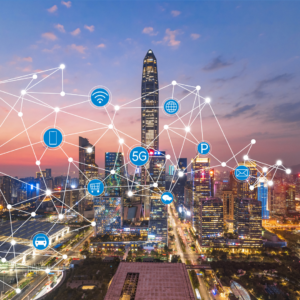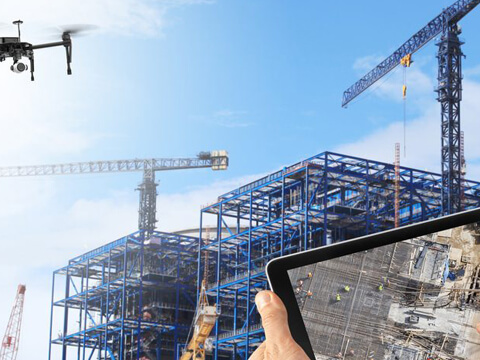Some proposed changes that could occur because of data collected in smart cities is more efficient public transportation, better and more effective environmental initiatives, and even better representation in local government. Currently, smart cities are still in the theoretical and design phase. While many people and many countries like the idea of smart cites, there simply aren’t any yet. Some cities are on track to becoming smart cities in the future, but none have quite developed to the extent of the conceptualized “smart city”. As technology develops and the world population grows, smart cities are becoming more and more plausible. There are three main aspects associated with smart cities: technology, sustainability, and safety.
Technology
 Technology would be the foundation and fuel for the theoretical smart cities. For example, one of the primary bottlenecks in many large cities as they are now, is traffic. In smart cities, data would be collected by information and communication technology such as cameras, and sensors that could analyze traffic patterns, control traffic lights and signals, and calculate the best routes for public transportation. This would increase the efficiency of big city transportation, possibly making hours long traffic jams and public transportation delays a thing of the past.
Technology would be the foundation and fuel for the theoretical smart cities. For example, one of the primary bottlenecks in many large cities as they are now, is traffic. In smart cities, data would be collected by information and communication technology such as cameras, and sensors that could analyze traffic patterns, control traffic lights and signals, and calculate the best routes for public transportation. This would increase the efficiency of big city transportation, possibly making hours long traffic jams and public transportation delays a thing of the past.
Another example of how technology would drive smart cities is parking. A smart city could have a system in place that tracks open parking in and around the city that is available for all citizens and visitors to see. This could eliminate the constant search for parking that has many people driving around in circles. Additionally, in recent years, there has been a resurgence in the effort to design and build cities that are walkable, a trait common to smart city designs, which would lessen traffic and the need for public transportation.
Additionally, technology such as air and water quality monitoring could be utilized to collect data in smart cities. This data could then be transmitted directly to government officials, citizens, and companies who in turn can tailor their actions to the data. This can be anything from advocating, voting, implementing new technology and programs, or simply walking to work instead of driving. This would make it easier than ever to start discussions and create change. Smart cities would make vital information accessible for all.
Sustainability
Sustainability is essential to smart city design. Smart cities are designed with the intention to improve the efficiency of city life and improve the quality of life if city dwellers. Sustainable and eco-friendly practices such as recycling, producing and utilizing green energy, reducing waste, and reducing carbon emissions may all contribute to a healthier Earth and a healthier population.
Sustainable technology and practices that may be used in future smart cities includes but is not limited to:
- Green energy sources – such as solar panels, hydroelectric dams, and wind turbines.
- Zero or limited waste living – this can be implemented in many ways like refill shops, banning plastic containers, requiring biodegradable packaging, and eliminating plastic bags in grocery stores.
- Walkable cities – as mentioned in the technology section above, in recent years many modern cities have been designed to be walkable. This not only lessens the need to drive and use public transportation, but also may eliminate the need for a personal vehicle for many people. That would serve the dual purpose of both shrinking their induvial carbon footprint and saving them money.
- Heavier reliance on public transportation – with the technology in theoretical smart cities making public transportation more accessible and reliable, citizens who are unable to walk to their destination could rely less on person vehicles and taxis, and more on the more environmentally friendly public transportation system.
- Banning gasoline powered cars – smart cities in the future may require residents who need or want to own a personal vehicle to purchase an eco-friendly alternative to the traditional gasoline powered car.
It is important to remember that different cities will implement different rules and regulations depending on the location, government, and cities. The examples provided above are just some of the ideas for regulations, technologies, and practices that smart city developers and governments may put in place to increase sustainability and decrease the environmental impact of city living.
Safety
 In a data driven theoretical smart city, public safety would ideally be at an all-time high. Some people may hear the phrase “smart city” and immediately think of some Orwellian surveillance state, but that is not the case. An increase in CCTV cameras may be a possibility but it is unlikely cameras or monitoring equipment will ever be installed by the city or government in private places, even in a technology driven city. Smart cities of the future would be designed with safety in mind. Here are some examples of safety improvements that could occur in smart cities.
In a data driven theoretical smart city, public safety would ideally be at an all-time high. Some people may hear the phrase “smart city” and immediately think of some Orwellian surveillance state, but that is not the case. An increase in CCTV cameras may be a possibility but it is unlikely cameras or monitoring equipment will ever be installed by the city or government in private places, even in a technology driven city. Smart cities of the future would be designed with safety in mind. Here are some examples of safety improvements that could occur in smart cities.
- Improved traffic flow and decreased cars on the street overall would likely lead to less traffic accidents.
- Data provided by traffic analysis coupled with decreased traffic would result in better emergency response times.
- Data provided by monitors and cameras in public areas can be sent directly to first responders so that they can be better prepared for the situation.
- Alleys and other potentially dangerous places could be well monitored and lit.
- Cyber security would be a high priority as it impacts the entire city and not just individuals.
- Cameras and audio detection technology could be used to detect and locate gunshots and other potentially violent occurrences.
Conclusion
Although the world has not yet seen its first smart city, the idea shows much promise. In a world dominated by technology it is only a matter of time before it is implemented on a larger scale to increase efficiency, sustainability, and safety.






